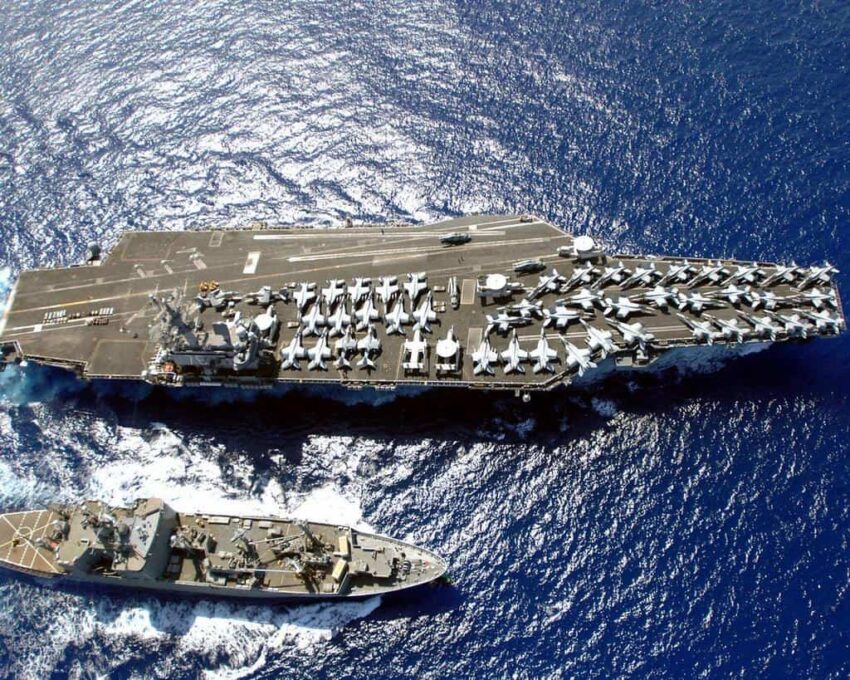24/7 Wall St. Insights:
- The F/A-18E/F Super Hornet was introduced in 1999 and has become a staple combat aircraft of the U.S. Navy
- It can be equipped with air-to-air missiles, joint direct attack munitions (drop/guided bombs), or even anti-ship missiles; the 20mm M61 Vulcan cannon comes standard
- The Super Hornet proved effective in the Middle East in carrying out air strikes, throughout the U.S. Global War on Terrorism
- Also: Dividend legends to hold forever
The F/A-18E/F Super Hornet has made a name for itself as a powerhouse in the U.S. Navy since its introduction in 1999. Not to be confused with the earlier model, the original F/A-18 Hornet, the Super Hornet features a larger airframe, increased payload capacity, and advanced avionics. However, what truly sets the Super Hornet apart from the competition is its ability to carry a variety of missiles and ordnance, making it one of the most heavily armed aircraft in the Navy’s arsenal. (These are the most iconic combat aircraft built by Boeing.)
For some quick specs on the jet, it has a maximum takeoff weight of 66,000 pounds and can carry over 17,000 pounds of ordnance. The frame is outfitted to handle air-to-air missiles, joint direct attack munitions (drop/guided bombs), or even anti-ship missiles. Each of these jets also come standard with a 20mm M61 Vulcan cannon.
Outside of the E/F variants of the Super Hornet, another variation was developed, the EA-18G Growler, which specializes in electronic warfare. However, the Growler can still equip missiles and ordnance as well.
The Super Hornet is powered by two General Electric F414 engines and can hit speeds over Mach 1.5. It has a combat range of roughly 1,200 miles when factoring in extended range via external fuel tanks.
Since its introduction in 1999, the Super Hornet has been pivotal in a number of engagements and U.S. Navy operations. It proved effective in the Middle East in carrying out air strikes, throughout the U.S. Global War on Terrorism.
The Super Hornet stands above many fighter jets when it comes to its armament. However, it is just one of the fighter jets that is employed by the U.S. Navy. (This military stealth plane flies twice as fast as the speed of sound.)
24/7 Wall St. is taking a closer look at what other combat aircraft the Navy has in its arsenal. To identify the most heavily armed aircraft flown by the U.S. Navy, 24/7 Wall St. reviewed data from the 2024 World Air Forces report from FlightGlobal, an aviation and aerospace industry website, and ranked the aircraft according to their armament. Additionally, we’ve included supplemental information on the type of aircraft, how many are in active service, top speed and more. We have excluded all trainer aircraft.
This post was updated on August 25, 2025 to correct inaccuracies regarding the exact craft names and armaments.
Here is a look at the most heavily armed aircraft in the U.S. Navy:
Why Are We Covering This?
24/7 would like our readers to understand where their tax dollars are being spent. The Navy received $202.6 billion in government funding in 2024, second only to the Air Force at $216.1. billion. In fiscal year 2025, the Navy has requested $16.6 billion of its funding to purchase 75 aircraft and helicopters, which is actually slightly less than in 2024.
8. MV-22 Osprey
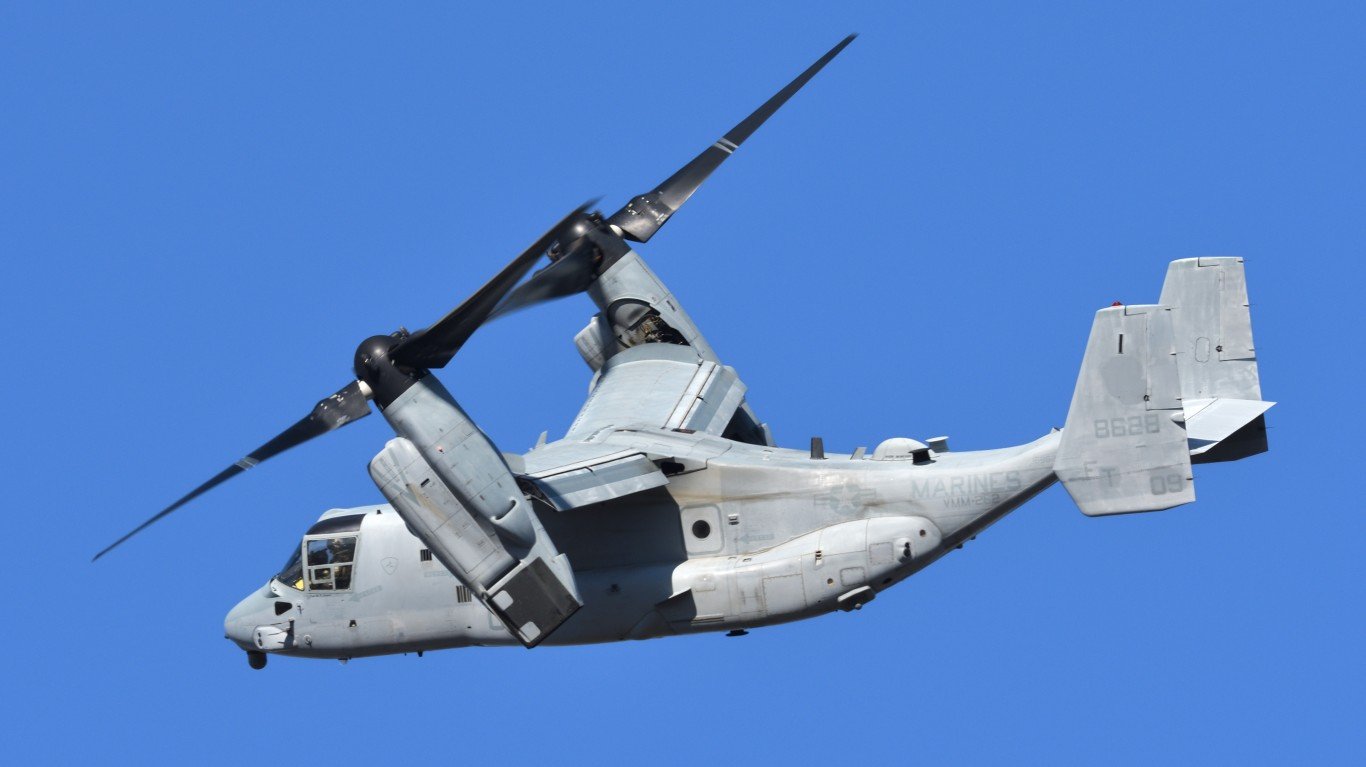
- Type: Tilt Rotor carrier onboard delivery aircraft
- Year introduced: 2007 (Marine Corps IOC), 2020-2021 (Navy)
- Number of aircraft: 27 planned
- Top speed: 316 mph
- Armament: Unarmed in Navy service, though capable of 7.62mm or .50 cal door guns
7. MH-53E Sea Dragon
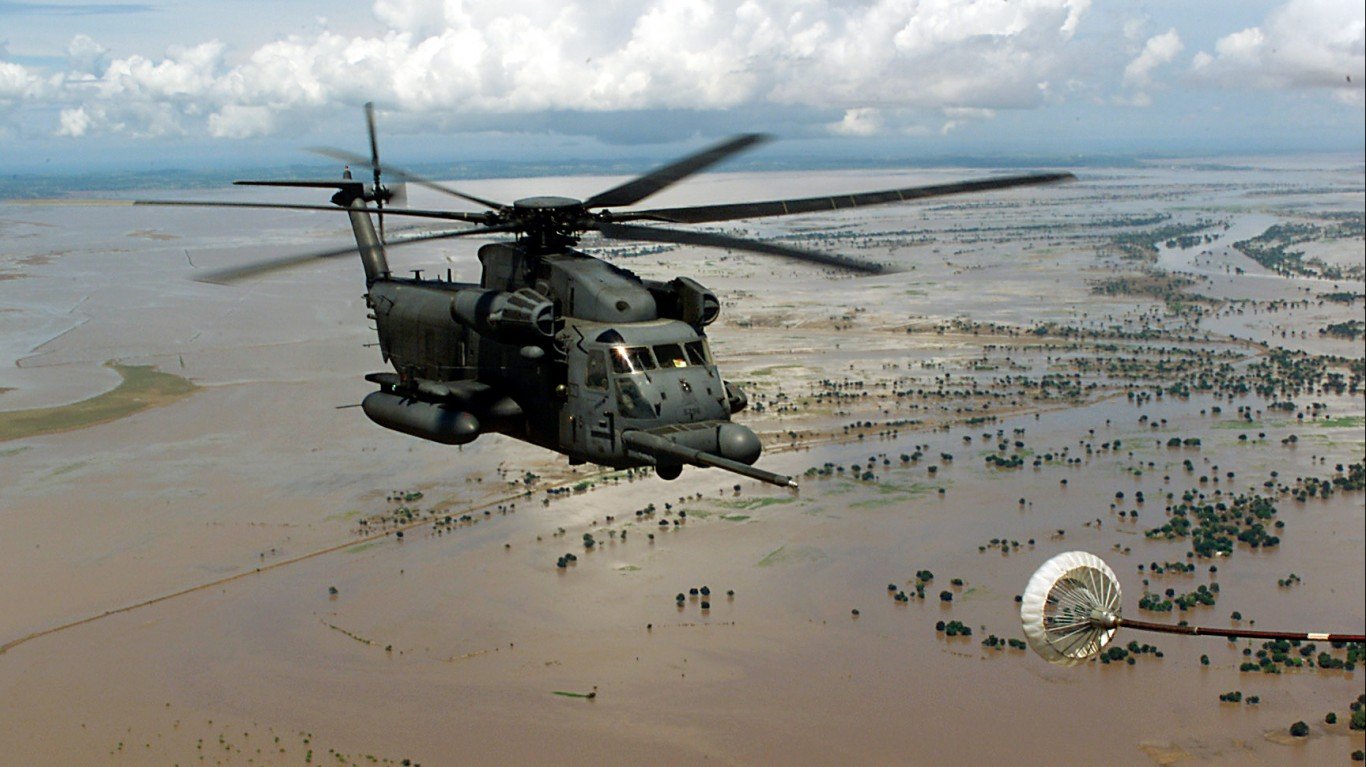
- Type: Mine countermeasures and heavy lift helicopter
- Year introduced: 1986
- Active aircraft: 26
- Top speed: 173 mph
- Armament: Usually unarmed; some can mount defensive 7.62mm M240 or .50 cal GAU-21 door guns
6. P-8A Poseidon

- Type: Maritime patrol, anti-submarine warfare aircraft
- Year introduced: 2013
- Active aircraft: 118
- Top speed: 490 mph
- Armament: Torpedoes, Harpoon anti-ship missiles, depth charges, naval mines
5. MH-60R Seahawk
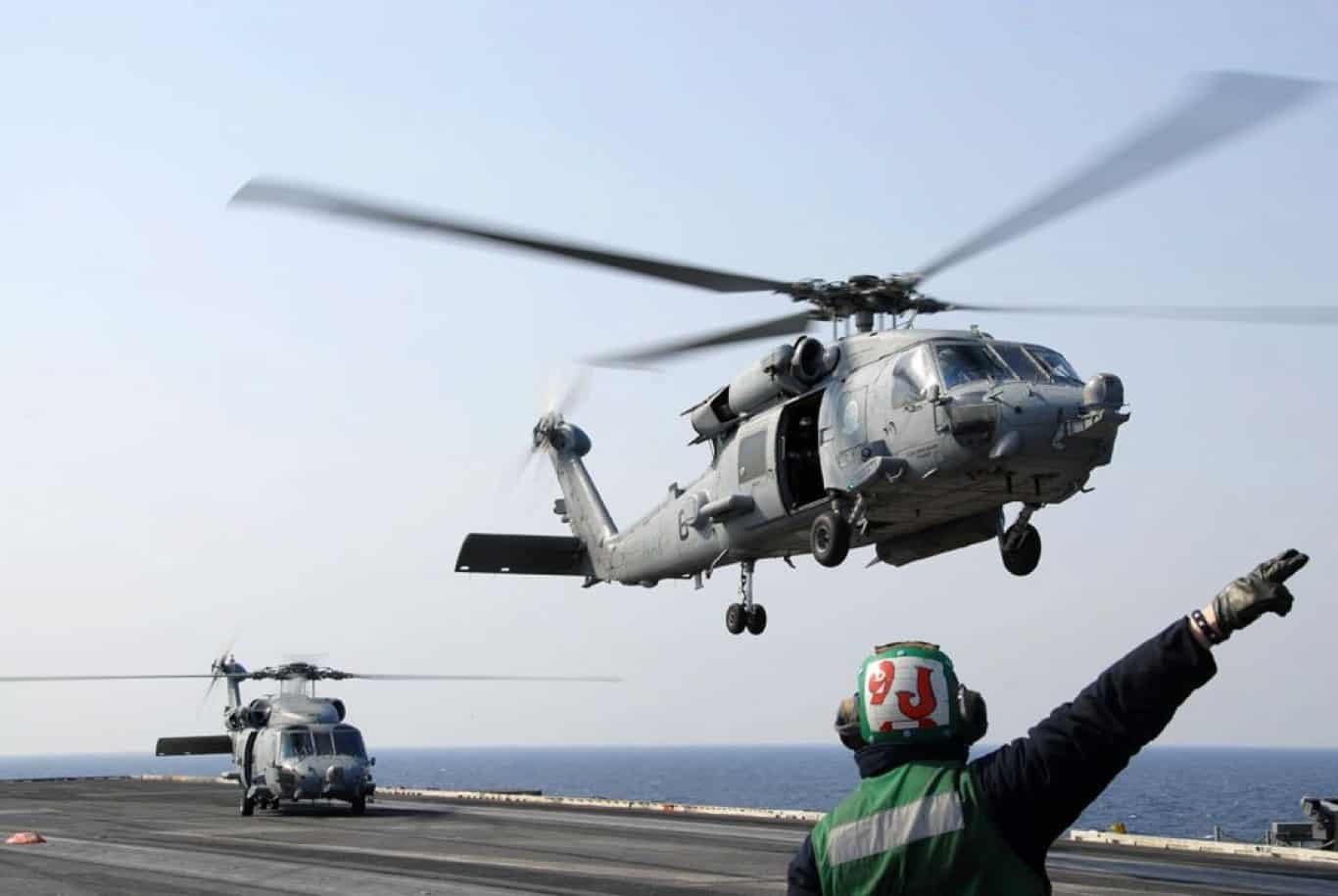
- Type: Medium-lift multi-mission helicopter
- Year introduced: 2000s
- Active aircraft: 400 combined
- Top speed: 180 mph
- Armament: 7.62mm machine guns, Hellfire missiles, rocket pods, lightweight torpedoes
4. P-3 Orion
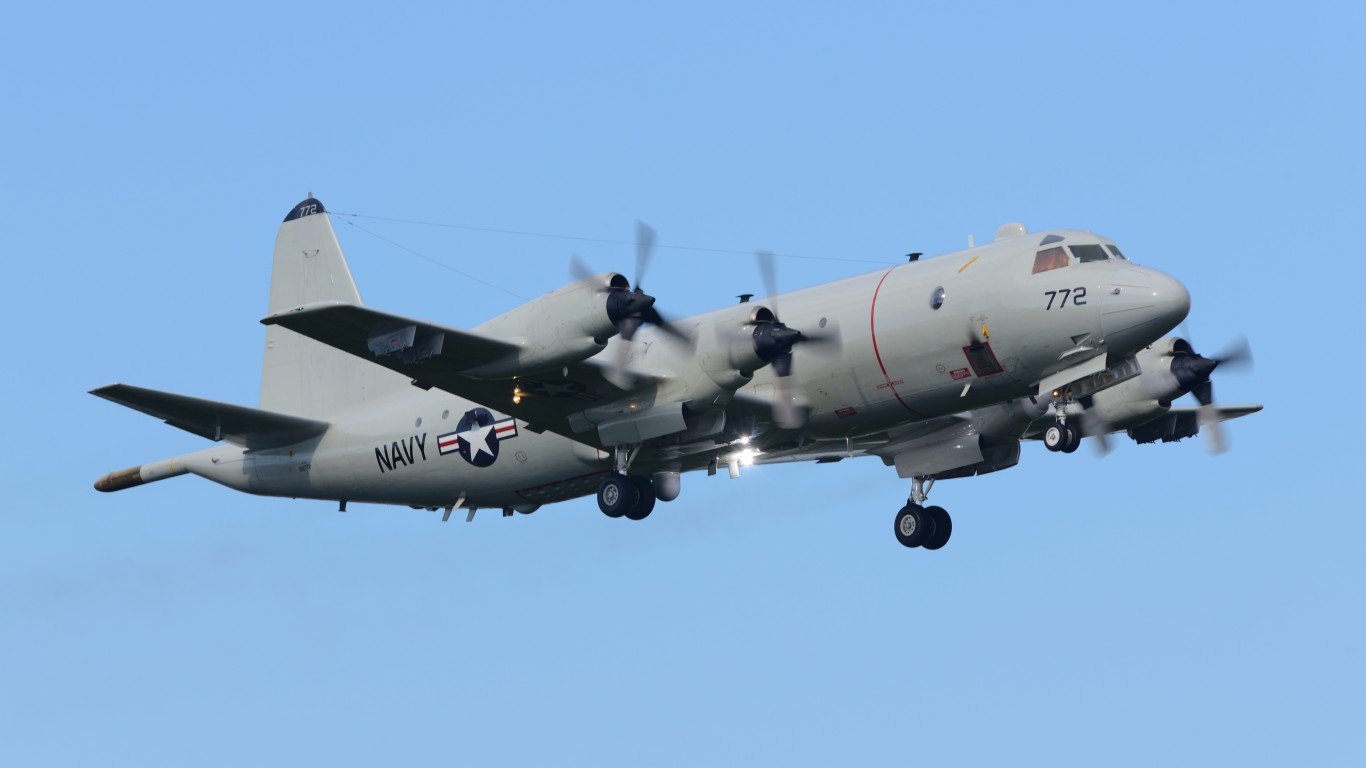
- Type: Maritime patrol, anti-submarine aircraft
- Year introduced: 1962
- Active aircraft: Very limited, though a few remain in test, training, or NASA roles
- Top speed: 466 mph
- Armament: Torpedoes, depth charges, Harpoon missiles, mines
3. EA-18G Growler
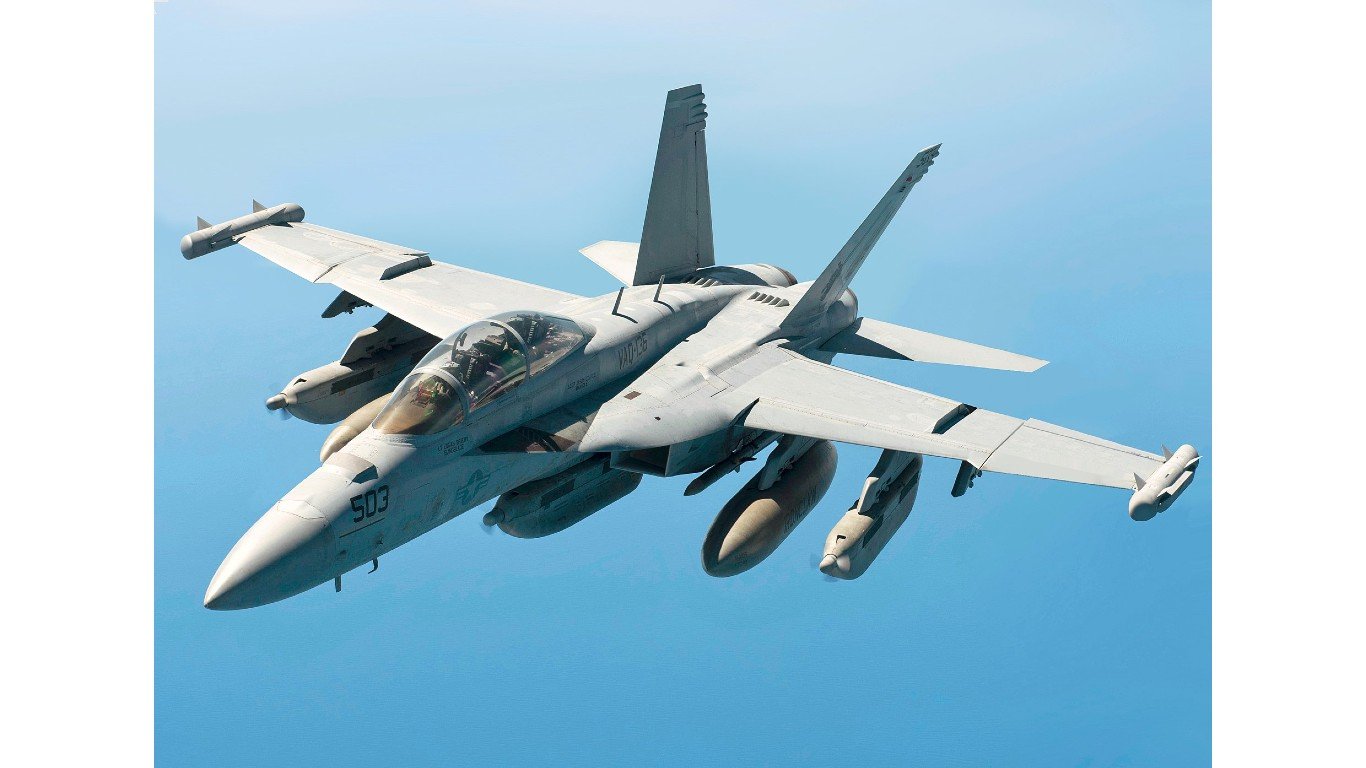
- Type: Carrier-based electronic warfare aircraft
- Year introduced: 2009
- Active aircraft: 153
- Top speed: 1,181 mph
- Armament: ALQ-99/ALQ-218 jamming pods, AGM-88 HARM missiles, AIM-120 AMRAAM for self-defense
2. F-35C Lightning II
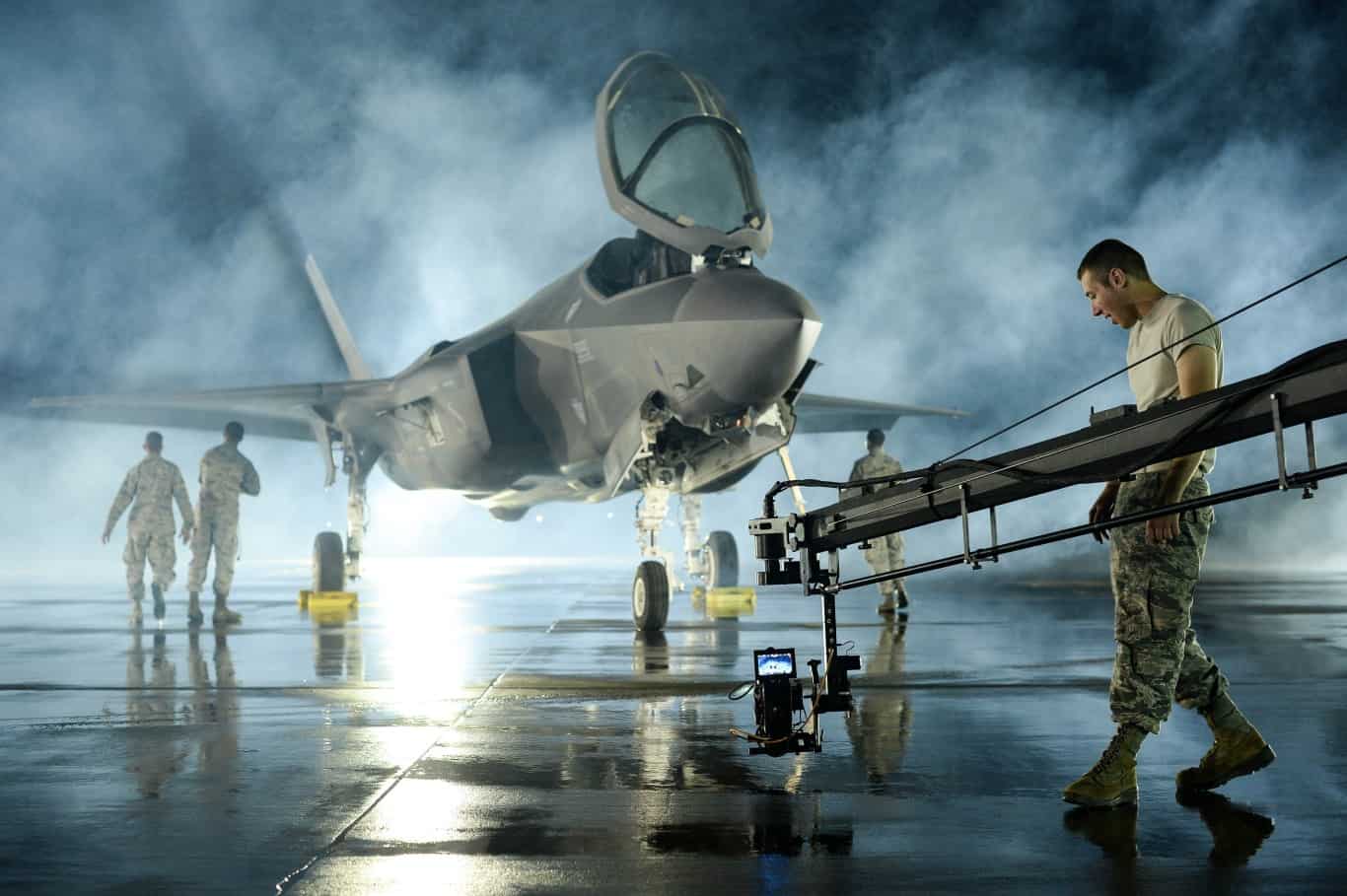
- Type: Carrier-based stealth multirole fighter
- Year introduced: 2019 (IOC)
- Active aircraft: 30
- Top speed: Mach 1.6 (1,200 mph)
- Armament: 25mm GAU-22/A cannon in external pod, AIM-9X Sidewinder, AIM-120 AMRAAM, JDAM, SDB, JSOW
1. F/A-18 Super Hornet
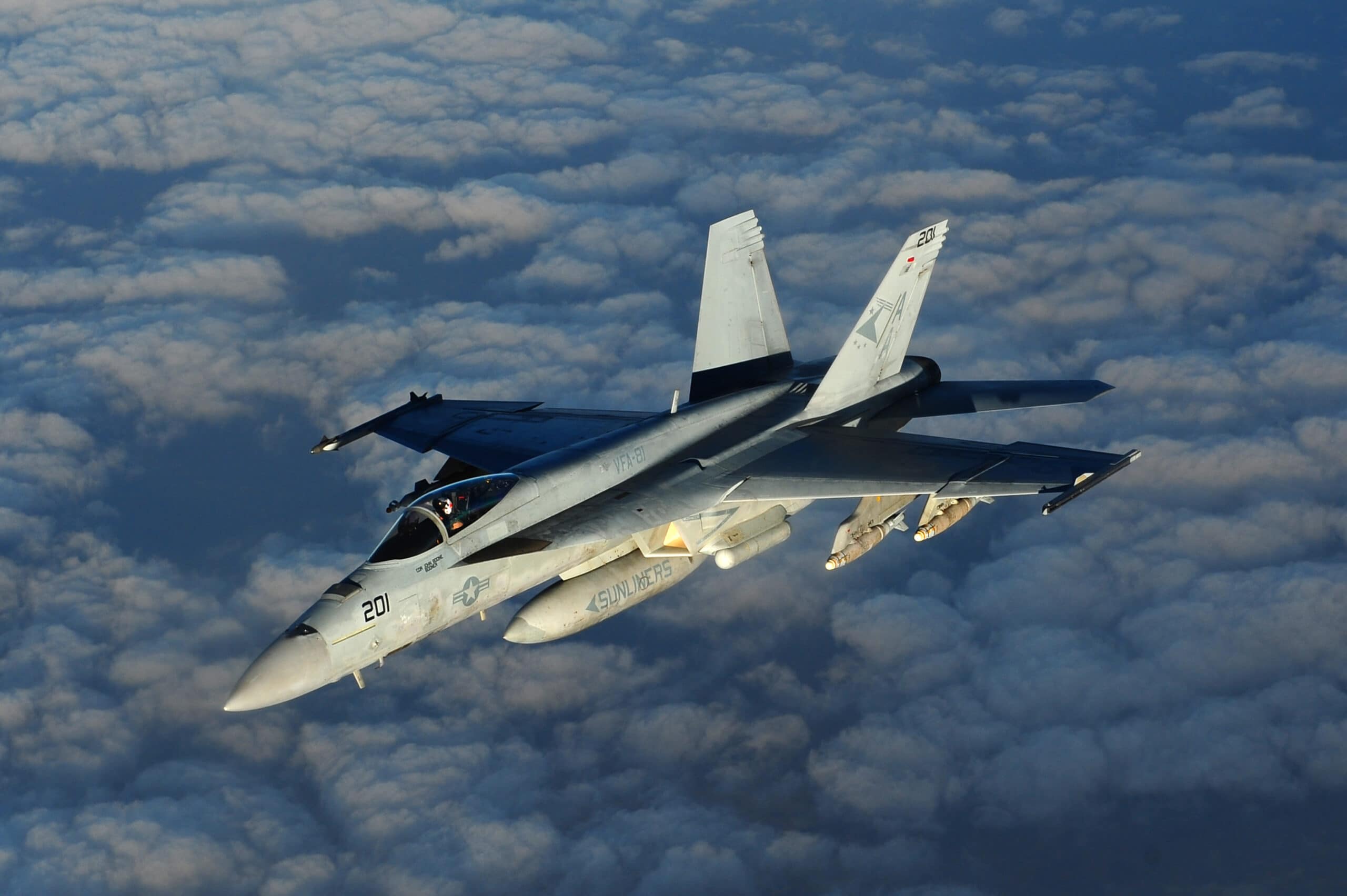
- Type: Carrier-based multirole strike fighter aircraft
- Year introduced: 1999
- Active aircraft: 421
- Top speed: Mach 1.6 (1,190 mph)
- Armament: 20mm M61A1 Vulcan, AIM-9 Sidewinder, AIM-120 AMRAAM, AGM-84 Harpoon, AGM-88 HARM, AGM-65 Maverick, JDAM, SDB, general-purpose bombs
The post The Super Hornet Is One of the Most Heavily Armed US Navy Aircraft appeared first on 24/7 Wall St..
Click this link for the original source of this article.
Author: Chris Lange
This content is courtesy of, and owned and copyrighted by, https://247wallst.com and its author. This content is made available by use of the public RSS feed offered by the host site and is used for educational purposes only. If you are the author or represent the host site and would like this content removed now and in the future, please contact USSANews.com using the email address in the Contact page found in the website menu.

